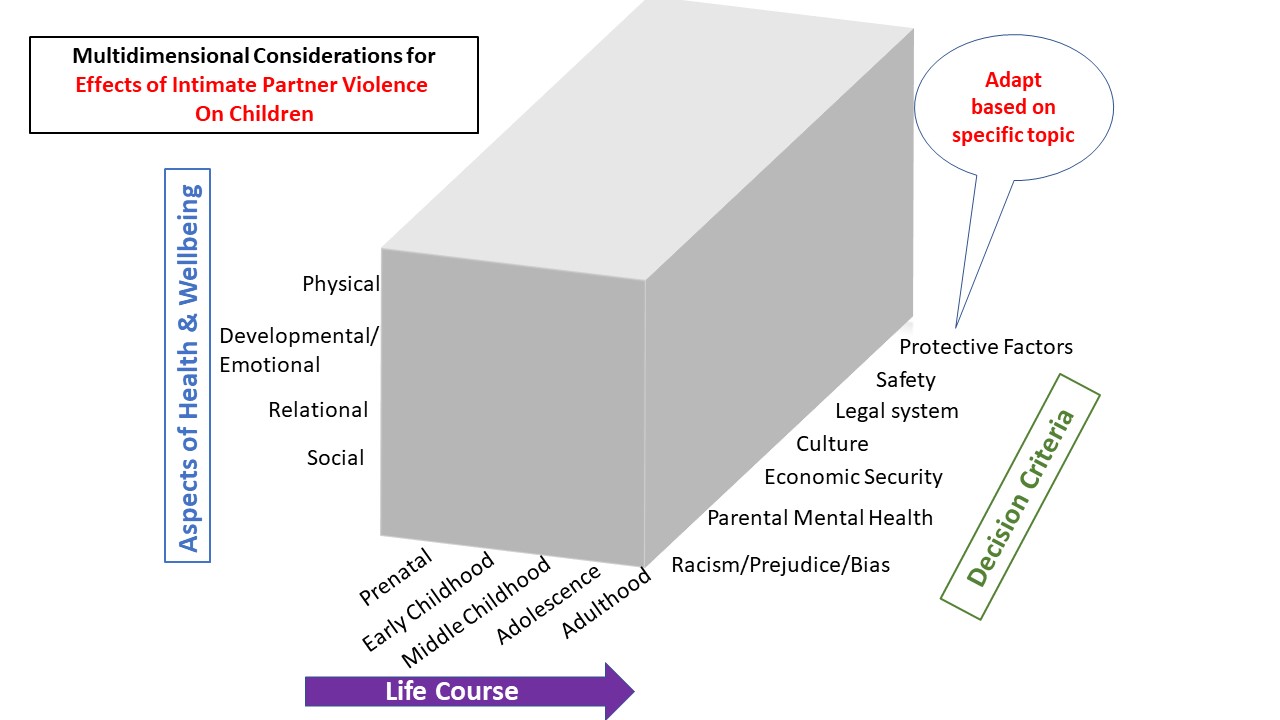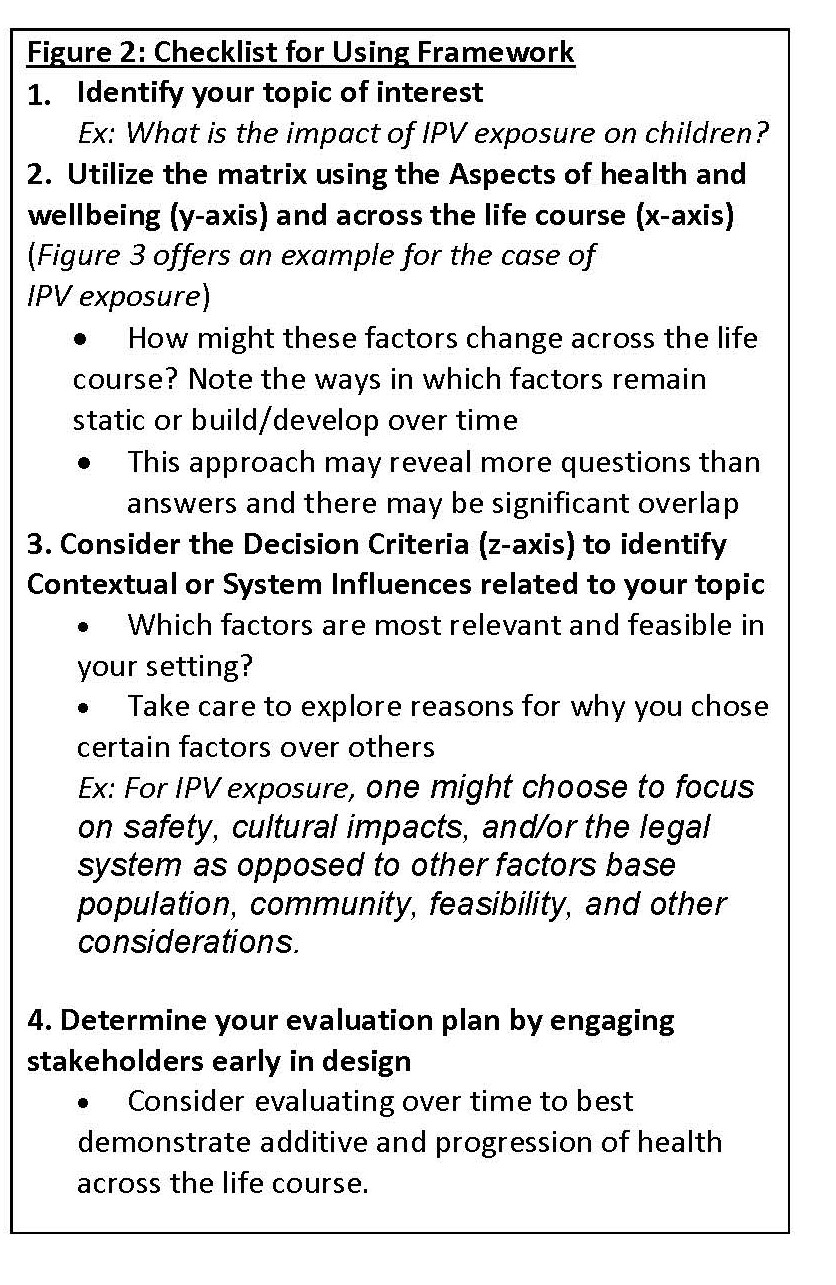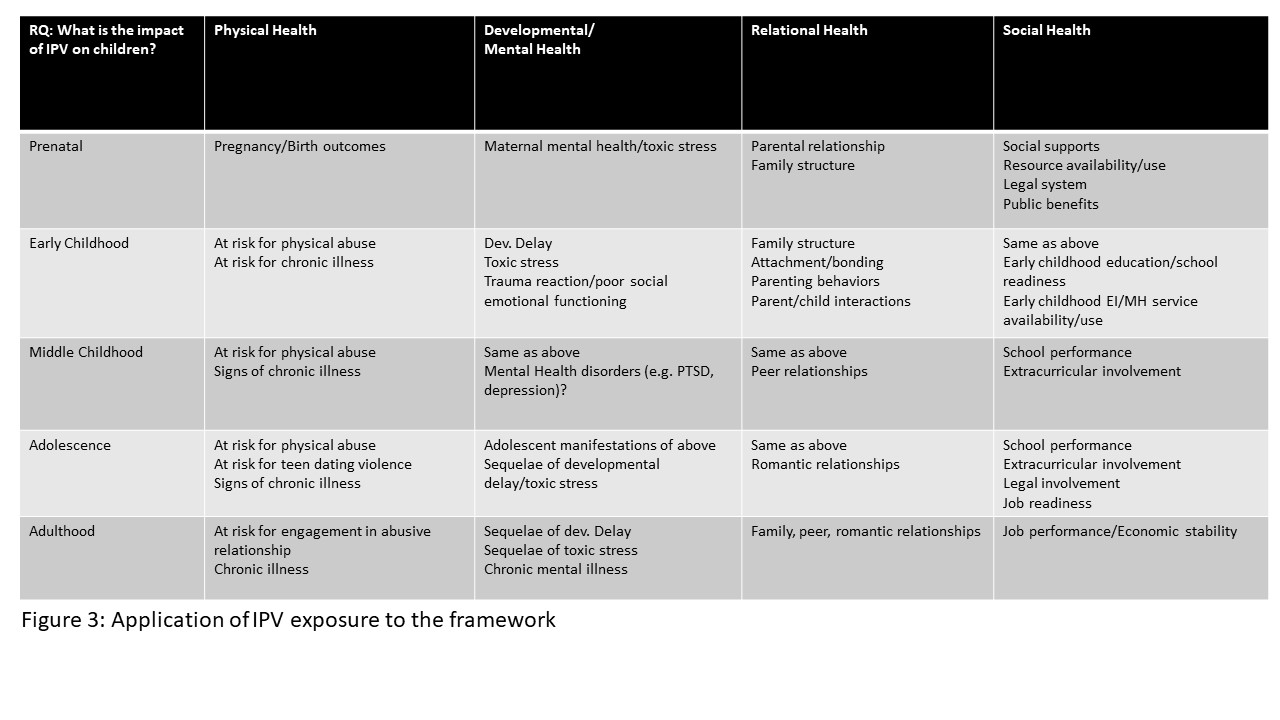Health Services Research
HSR 4: National or Novel
611 - A framework for evaluating complex pediatric health interactions and outcomes across the child's life course
Publication Number: 611.32

Kristine H. Schmitz, MD (she/her/hers)
Assistant Professor
Rutgers, Robert Wood Johnson Medical School
New Brunswick, New Jersey, United States
Presenting Author(s)
Background: Clinical interventions and program evaluation often fail to consider the multiple, interdependent, contextual factors that impact child health. Elements within this complex system may not receive enough attention in the process and refinement of the measure. Implementation Science tools, such as the Haddon matrix, Consolidated Framework for Implementation Research (CFIR), and co-design theories, can address these shortcomings.
Objective:
We aimed to develop a framework for pediatric clinical measurement that captures the complexity of contextual factors, life course, and interacting predictors of health/wellness. To illustrate the application of the model, we applied it to Intimate Partner Violence (IPV) exposure which has serious implications for children's health.
Design/Methods: A team of academic researchers, family representatives, and clinicians, funded by HRSA, utilized the validated Haddon Matrix, theories of co-design, and CFIR to develop an improved framework to measure clinical interventions and pediatric outcomes.
Results:
We present a novel, 3-dimensional depiction of complex pediatric health interactions derived from the Haddon Matrix, a public health framework for identifying countermeasures, complemented by principles from CFIR and co-design theory, that includes complex, interrelated components with an explicit consideration for the context and life course of children (Figure 1).
The x-axis depicts the child’s life course. The y-axis outlines aspects of health within the child’s life course and reminds researchers to consider aspects of wellbeing. The z-axis shows the specific interacting contextual and systemic factors. The x and y axes remain static for all clinical measures, but the z-axis is adapted to the characteristic to be measured. These decision criteria change based on the topic and are interactive with one another. In this example, the z-axis describes contextual and systemic factors that interact with causes and potential countermeasures of intimate partner violence.
Figure 2 offers guidance when developing a child health evaluation model. Figure 3 offers an example of the application to IPV.
Conclusion(s): This novel, 3-dimensional, multistep approach offers a pediatric-specific framework for facilitating decision-making by assisting child health and public health researchers to integrate: 1) health along the life course, 2) health and well-being, and 3) contextual and systemic factors. 


